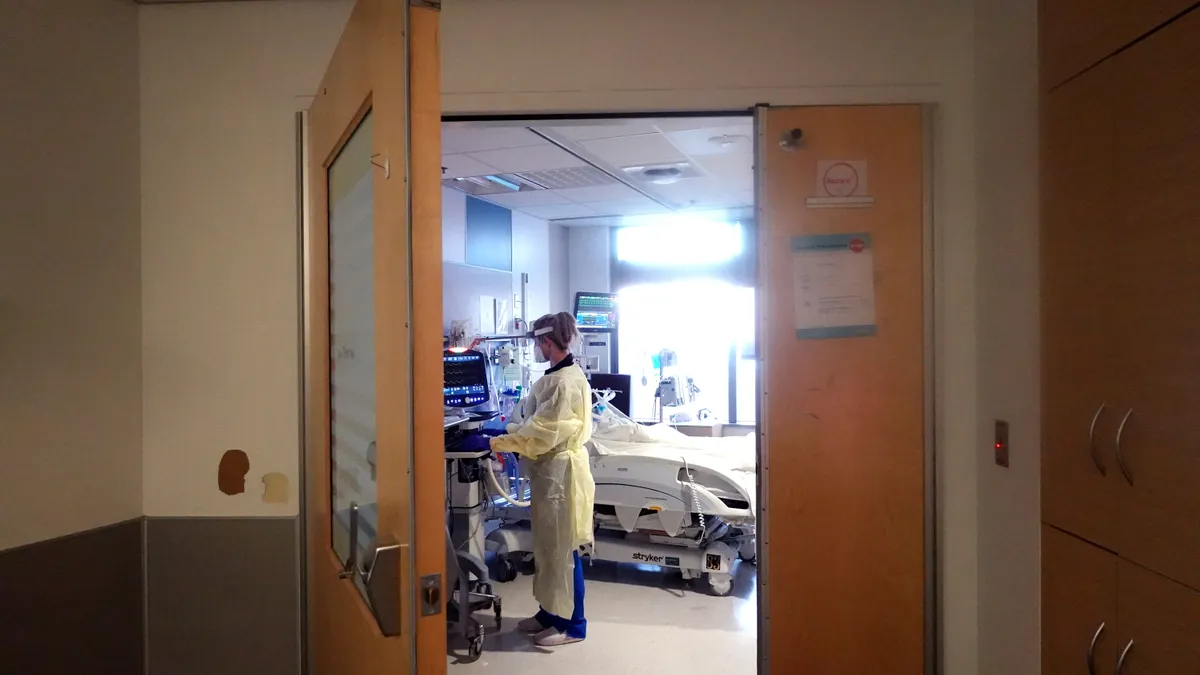Dive Brief:
- U.S. hospitals expect to increase capital spending by around 9% next year and buy equipment for use in elective procedures delayed by COVID-19, according to a Baird survey of 38 health system CFOs, representing more than 600 inpatient facilities.
- The CFOs cited procedural tools and endoscopic cameras as a spending priority, while orthopedic and soft tissue surgical robotic systems were less of a priority. The analysts wrote that “hospitals seem to be reserving precious capital dollars for procedural tools that can better drive real-time revenues” despite more favorable acquisition options offered by robotics manufacturers, like leasing.
- Baird’s team identified the survey results as a positive for orthopedic companies, particularly Stryker. The analysts singled out Stryker because of the potential for its Mako robot to drive share gains.
Dive Insight:
The macroeconomic situation has raised concerns that hospitals may defer purchases of equipment. The survey supports the case that capital spending growth will slow, with the CFOs forecasting a 9% increase compared to a 13% jump this year. Yet, the 9% forecast is well above pre-pandemic growth, which was in the low single digits, at best, and suggests hospitals will have more money to spend than in 2023.
Spending on endoscopic cameras, operating room equipment and procedural tools is forecast to receive the biggest bump, a trend the analysts attributed to the need for hospitals to add capacity for elective procedures delayed by COVID-19.
Surgical robots are a lower priority. The CFOs forecast no increase in spending on soft tissue robots such as Intuitive Surgical’s da Vinci. Spending on robotic systems for hip and knee procedures is tipped to fall, although orthopedic companies could benefit from an uptick in spending on spine robotic systems. The analysts named Stryker, which aims to expand Mako into spine next year, as a potential beneficiary.
Mako, which the analysts called the market share leader, is forecast to make further gains over the next two years. The survey suggests Stryker, Johnson & Johnson and Smith & Nephew will gain ground at the expense of Zimmer Biomet’s Rosa. However, the analysts received similar feedback in last year’s survey and are yet to see “any evidence of such slowing for Rosa.”
The CFOs forecast low-single-digit growth in most orthopedic categories. Interventional cardiovascular volumes are predicted to rise faster, with the CFOs forecasting accelerating growth that could climb into the mid-single digits, but the analysts remain cautious about the prospects of the sector.
“We’re not yet calling for accelerating cardio growth FY24, but find it encouraging that cardio growth is expected to remain elevated into next year, perhaps as patient backlogs and/or a reaccelerated diagnostic patient backlogs translate to procedures,” the analysts wrote.











